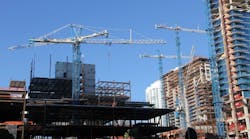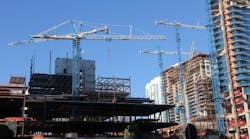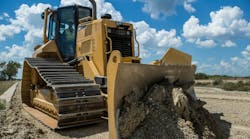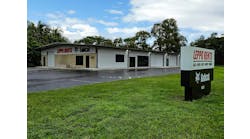Damage From Irma Will Have Varied Effects On Construction
Because of extensive power outages, flooding, evacuations and road obstructions, the impact of Hurricane Irma on construction materials production in the Southeast will not be known for some time. For the most part, Florida is not a major source of construction materials for other regions. But demand for materials from damage in Florida, the Caribbean and Puerto Rico will likely have an impact on delivery times and prices elsewhere. Unlike the damage caused by Harvey in Texas and Louisiana, which resulted mostly from flooding, much of the damage from Irma was from extreme winds that tore off roofs, blew out windows and brought down power lines. Evacuations from Irma were much more extensive, and several million customers are without power, a situation that may take many weeks to rectify. The geology of Florida may mean there is more extensive damage to roads and underground structures from subsidence and sinkholes.
In contrast, one reader reported on Sunday, "What we are hearing from our construction contacts on the ground post Harvey is that this will be a residential & nonresidential rebuild event, and public/infrastructure will only need to be repaired (vs. rebuilt). Cement capacity utilization in the U.S. market is tightening, but we are not quite to an all-out shortage yet. Given access to a major port that can import cement, we don't anticipate cement shortages in the near to mid-term. The only product category in that market that could be at risk is wallboard—scarcity will be driven by a big surge in demand, coupled with at least one major plant not fully operational in that market. Finally, gas and diesel shortages are already an issue in south Texas post storm—this should fix itself in a couple of weeks."
"Economic activity expanded at a modest to moderate pace across all 12 Federal Reserve districts in July and August," the Fed reported on Wednesday in the latest "Beige Book," based on information collected from early July through Aug. 28. The Beige Book is a compilation of informal soundings of business conditions in each of the 12 districts, which are referenced by the name of their headquarters cities. The latest Beige Book included these comments relevant to construction: Both residential and commercial construction increased slightly overall....There were reports of worker shortages in numerous industries, most notably in manufacturing and construction....Input and materials costs generally increased, most notably for freight, lumber and steel."
"The Dodge Momentum Index moved lower in August, falling 2.4%...from its revised July reading," Dodge Data & Analytics reported on Friday. "The Momentum Index is a monthly measure of the first (or initial) report for nonresidential building projects in planning, which have been shown to lead construction spending for nonresidential buildings by a full year. The decline in August can be attributed to an 8.7% drop in the commercial component of the Momentum Index, while the institutional component rose 7.3%. The commercial component has seen a steep rise over the past year as large projects--particularly office buildings—entered the planning cycle. The August retreat for the commercial component brings planning activity back to a level more consistent with a sustainable pace of development."
"July spending growth slowed" in the health care sector, according to analysis of health economic indicators released on Friday by nonprofit research organization Altarum's Center for Sustainable Health Spending. "Driving low overall spending growth is historically low hospital spending, which, at a revised 0.8% June growth rate, is the lowest year-over-year (y/y) monthly growth rate recorded in more than 25 years." Spending on private, state and local hospital construction slipped 3.8% in the first seven months of 2017 combined compared to the same period in 2016, according to Census Bureau data posted on September 1.
Construction compensation consultant PAS reported in its Construction Compensation Quarterly on September 1 that open-shop "contractors anticipate skilled craft hourly wage increases of 3.1% in 2017 (3.2% excluding zeros). Actual increases for 2016 were 3.2% (including zeros) and 3.3% (excluding zeros). These increases are across the board or all craft, contractor types, contractor sizes and regions of the country.[This year's] survey includes 89,363 skilled craft employed by more than 900 open-shop contractors. The 3.1% average, if realized, would be the smallest since 2012.
Employer costs for employee compensation in the second quarter averaged $39.18 for construction employers, 18% more than for all private-sector employers, the bureau of Labor Statistics reported on Friday. For both construction and all private employers, wages and salaries comprised just less than 70 percent of the total, but the composition of some costs differed substantially.
Revenues of architectural and related services firms increased 2.5 percent in the second quarter of 2017, following a 5.6 percent decrease in the first quarter, according to Census's Quarterly Services Survey, posted on Thursday. Revenues increased 4 percent year over year. Revenues of engineering services firms increased 2.6 percent in the second quarter, following a 3.8 percent decline in the first quarter, and rose 1.4 percent year over year.










